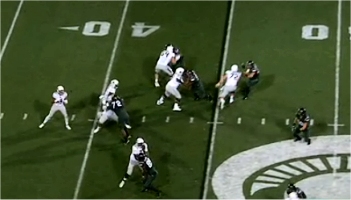That Time The Rose Bowl Was Played in North Carolina
Sports are making some tentative plans for both starting or restarting their seasons and coping with the Covid-19 pandemic. This includes changing venues and/or limiting the number of venues leagues will stage events at. If so, it won’t be the first time events have been rescheduled for other locations due to circumstances. A prime example of this is the 1942 Rose Bowl football game.
The Rose Bowl was first played on January 1st, 1902, in Pasadena, California. After a 14 year hiatus, the game returned on New Year’s Day of 1916. It has been played every year since then and always in Pasadena, with the exception of the 1942 game, which of course was played at the conclusion of the 1941 college football season. On December 7th, 1941, the Japanese bombed Pearl Harbor and the U.S. was plunged into World War II. At that time, there fears that the Japanese could possibly launch an attack against any event on the West Coast with a large crowd, so for security reasons, the game would not be played in Pasadena on New Year’s Day of 1942.
The Pacific Coast Conference winner got an automatic bid to the Rose Bowl (which was one of only five bowls at that time). Oregon State (7-2, #12 in the Associated Press College Football Poll) was the conference champion, and as such, would invite an opponent to play in the game. OSU invited second ranked Duke (9-0), winners of the Southern Conference. The Blue Devils had played in the 1939 Rose Bowl, losing to USC 7-3.
With the opponent set, the next challenge was deciding where to play. The game could not be played in OSU’s stadium since that was a West Coast venue, so Duke University proposed to host the game at its field in Durham, North Carolina, on New Year’s Day, and Oregon State accepted the offer.
Duke was a powerhouse of a team that year, allowing no more than 14 points in any game; the Blue Devils shut out five of their nine opponents, including a 50-0 blowout at Maryland and a 56-0 win at Davidson. Oregon State wasn’t the offensive steamroller that Duke was, but the Beavers had a stifling defense that matched Duke’s five shutouts, but also had allowed no more than 13 points in any game all season. Still the Blue Devils were two touchdown favorites.
Oregon State scored first on a 15 yard touchdown run in the first quarter; Duke matched that with a second quarter rushing touchdown that made it 7-7 at the half. OSU opened the scoring in the second half with a 31 yard touchdown pass in the third quarter, which was matched by a one yard rushing touchdown by Duke with 6:15 left in the third. The Beavers scored on a 63 yard touchdown pass from Bob Dethman to Gene Gray with 25 seconds left in the quarter; a missed extra point made it 20-14 at the end of the third quarter. The only scoring in the fourth quarter was a Duke safety when the Oregon State punter bobbled a snap in the end zone and was tackled trying to run it out. The final score was Oregon State 20 Duke 16, a big upset win for OSU.
The Rose Bowl returned to Pasadena the next year. By that time, many of the players from the ’42 game were in the armed forces, including Duke coach Wallace Wade, one of the highest profile coaches of that era. Wade had previously served in World War I. One OSU player and three Duke players who played in the ’42 Rose Bowl were killed in action during the war; still others were wounded.
The 1942 Rose Bowl was the last one to date for Duke. The game was the first Rose Bowl appearance for Oregon State, and remains it’s only victory, with losses to Iowa in 1957 and to Michigan in 1965. The game was the first meeting between the two schools, and they have not played each other since.
We may earn a small commission from qualifying purchases made from Amazon.com links at no cost to our visitors. Learn more: Affiliate Disclosure.









Recent Comments